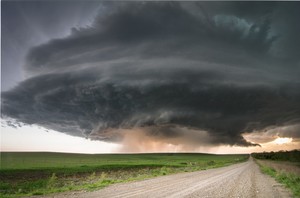Things for Unit 3 you should UNDERSTAND, KNOW, and be able to DO...
Understand:
- Humans are impacted daily by changes in the atmosphere.
- Meteorologist collect weather data in order to predict changes in the atmosphere in the near future
- Weather forecasts allow the public to stay informed of oncoming changes in the atmosphere that may impact their lives.
Know:
- The transfer of heat energy within the atmosphere, the hydrosphere, and Earth’s interior results in the formations of regions of different densities. These density differences result in motion.
- Weather patterns become evident when weather variables are observed, measured, and recorded. These variables include air temperature, air pressure, moisture (relative humidity and dewpoint), precipitation (rain, snow, sleet, etc.), wind speed and direction, and cloud cover.
- The atmosphere is divided into layers based on temperature.
- Weather variables are measured using instruments such as thermometers, barometers, psychrometers, precipitation gauges, anemometers, and wind vanes.
- Weather variables are interrelated. For example, temperature and humidity affect air pressure and probability of precipitation and air pressure gradient controls wind velocity
- Air temperature, dewpoint, cloud formation, and precipitation are affected by the expansion and contraction of air due to vertical atmospheric movement.
- Weather variables can be represented in a variety of formats including radar and satellite images, weather maps (including station models, isobars, and fronts), atmospheric cross-sections, and computer models.
- Atmospheric moisture, temperature and pressure distributions; jet streams, wind; air masses and frontal boundaries; and the movement of cyclonic systems and associated tornadoes, thunderstorms, and hurricanes occur in observable patterns. Loss of property, personal injury, and loss of life can be reduced by effective emergency preparedness.
Vocab Terms: meteorology, troposphere, stratosphere, ozone layer, temperature, specific heat, thermometer, air pressure, barometer, barometric pressure, sling pychrometer, dew point, relative humidity, wind, wind (weather) vane, anemometer, Coriolis Effect, Westerlies, jet stream, clouds, cirrus, stratus, cumulus, fog, precipitation, rain, sleet, snow, hail, air mass, cP, cT, mP, mT, station model, barometric trend, isotherm, isobar, weather variable relationships, synoptic weather map, weather fronts, warm front, cold front, occluded front, stationary front, prevailing direction, mid-latitude cyclone, tornado, Fujita scale, hurricane, Saffir-Simpson scale, storm surge, condensation
Extended Vocabulary: mesosphere, thermosphere, trade winds, horse latitudes, doldrums, vortex, cyclonic movement, twister, severe weather, global warming, wind-blown projectile
Do:
- Interpret the Selected Properties of Earth’s Atmosphere on page 14 of the Earth Science Reference Tables (ESRT).
- Convert temperature and pressure units using page 13 of the ESRT.
- Determine Dewpoint and Relative humidity using page 12 of the ESRT.
- Interpret Planetary Wind and Moisture Belts in the Troposphere on page 14 of the ESRT.
- Interpret and create station models using page 13 of the ESRT.
- Construct and interpret weather isomaps
- Analyze synoptic weather maps using maps symbols on page 13 of the ESRT.
- Use weather data and/or synoptic weather maps to create simple weather forecast.
- Relate Specific Heats of Common Materials and Properties of Water from page 1 of the ESRT to energy in the atmosphere.


